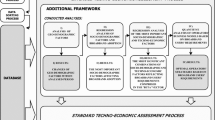Abstract.
As residential broadband options such as cable and xDSL grow in popularity, broadband providers continue to roll out service in select market areas. However, due to technological limitations, some locations qualify for xDSL broadband service while others do not. The purpose of this article is to examine the impact of local geography on broadband (xDSL) network access. This type of micro-geographic analysis is important in two ways. First, a detailed analysis at the local level can reveal the spatial disparities in infrastructure access. Second, because broadband access is quickly emerging as the technology of choice for both small businesses and households, it is important to consider which locations will have opportunities for these connections and which locations will not. Utilising an integer programming model, the maximal covering location problem, and a geographic information system, xDSL broadband access is evaluated in Columbus, Ohio. Results indicate that many suburban areas can be left without adequate service.
Similar content being viewed by others
Author information
Authors and Affiliations
Additional information
Received: 6 October 2000 / Accepted: 18 June 2001
Rights and permissions
About this article
Cite this article
Grubesic, T., Murray, A. Constructing the divide: Spatial disparities in broadband access. Papers Reg Sci 81, 197–221 (2002). https://doi.org/10.1007/s101100100096
Published:
Issue Date:
DOI: https://doi.org/10.1007/s101100100096




